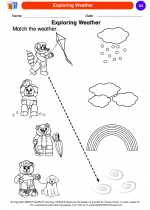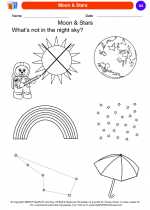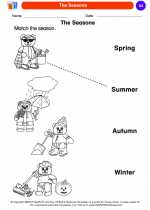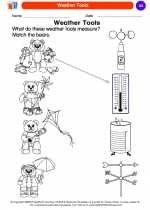Antibiotics
Antibiotics are powerful medications that are used to treat bacterial infections. They work by killing or inhibiting the growth of bacteria, which helps the body's immune system to fight off the infection.
Types of Antibiotics
There are several different types of antibiotics, each with its own specific mechanism of action. Some common types of antibiotics include:
- Penicillins: Penicillin antibiotics work by interfering with the bacteria's cell wall synthesis, leading to the destruction of the cell wall and the eventual death of the bacteria.
- Cephalosporins: Cephalosporin antibiotics also target the bacterial cell wall, leading to cell lysis and death.
- Tetracyclines: Tetracycline antibiotics inhibit the protein synthesis in bacteria, preventing them from multiplying and causing the infection to spread.
- Macrolides: Macrolide antibiotics interfere with the bacterial protein synthesis, leading to the inhibition of bacterial growth.
- Fluoroquinolones: Fluoroquinolone antibiotics target the bacterial DNA replication process, preventing the bacteria from replicating and spreading.
How Antibiotics Work
Antibiotics work in various ways to combat bacterial infections. Some common mechanisms of action include:
- Interfering with Cell Wall Synthesis: Certain antibiotics disrupt the formation of the bacterial cell wall, leading to the destabilization and rupture of the bacterial cell.
- Inhibiting Protein Synthesis: Other antibiotics interfere with the bacterial protein synthesis process, preventing the bacteria from producing essential proteins for their survival and reproduction.
- Blocking Nucleic Acid Synthesis: Some antibiotics target the bacterial DNA or RNA synthesis, disrupting the genetic material required for bacterial growth and reproduction.
- Disrupting Cell Membrane Function: Certain antibiotics interfere with the bacterial cell membrane, leading to the leakage of cellular contents and eventual cell death.
Study Guide
Here are some key points to remember about antibiotics:
- Antibiotics are used to treat bacterial infections, not viral infections.
- It is important to complete the full course of antibiotics as prescribed by the healthcare provider, even if symptoms improve before the medication is finished.
- Antibiotics should only be used when prescribed by a healthcare professional to prevent the development of antibiotic resistance.
- Common side effects of antibiotics may include nausea, diarrhea, and allergic reactions.
- Some antibiotics may interact with other medications, so it's important to inform the healthcare provider of any other medications being taken.
Understanding how antibiotics work and their proper use is crucial for effectively treating bacterial infections and preventing the development of antibiotic resistance.
[Antibiotic] Related Worksheets and Study Guides:
.◂Science Worksheets and Study Guides Kindergarten. Weather
Coloring Worksheet Calendar
Calendar  Coloring Worksheet
Coloring Worksheet Calendar
Calendar  Coloring Worksheet
Coloring Worksheet Day and Night
Day and Night  Coloring Worksheet
Coloring Worksheet Day and Night
Day and Night  Coloring Worksheet
Coloring Worksheet Exploring Weather
Exploring Weather  Coloring Worksheet
Coloring Worksheet Exploring Weather
Exploring Weather  Coloring Worksheet
Coloring Worksheet Look at the Clouds
Look at the Clouds  Coloring Worksheet
Coloring Worksheet Look at the Clouds
Look at the Clouds  Coloring Worksheet
Coloring Worksheet Moon & Stars
Moon & Stars  Coloring Worksheet
Coloring Worksheet Moon & Stars
Moon & Stars  Coloring Worksheet
Coloring Worksheet Natural Events
Natural Events  Coloring Worksheet
Coloring Worksheet Natural Events
Natural Events  Coloring Worksheet
Coloring Worksheet Sun and Shadows
Sun and Shadows  Coloring Worksheet
Coloring Worksheet Sun and Shadows
Sun and Shadows  Coloring Worksheet
Coloring Worksheet The Seasons
The Seasons  Coloring Worksheet
Coloring Worksheet The Seasons
The Seasons  Coloring Worksheet
Coloring Worksheet Things in the Sky
Things in the Sky  Coloring Worksheet
Coloring Worksheet Things in the Sky
Things in the Sky  Coloring Worksheet
Coloring Worksheet Weather Tools
Weather Tools  Coloring Worksheet
Coloring Worksheet Weather Tools
Weather Tools 

 Coloring Worksheet
Coloring Worksheet
 Coloring Worksheet
Coloring Worksheet
 Coloring Worksheet
Coloring Worksheet
 Coloring Worksheet
Coloring Worksheet
 Coloring Worksheet
Coloring Worksheet
 Coloring Worksheet
Coloring Worksheet
 Coloring Worksheet
Coloring Worksheet
 Coloring Worksheet
Coloring Worksheet
 Coloring Worksheet
Coloring Worksheet
 Coloring Worksheet
Coloring Worksheet
 Coloring Worksheet
Coloring Worksheet
 Coloring Worksheet
Coloring Worksheet
 Coloring Worksheet
Coloring Worksheet
 Coloring Worksheet
Coloring Worksheet
 Coloring Worksheet
Coloring Worksheet
 Coloring Worksheet
Coloring Worksheet
 Coloring Worksheet
Coloring Worksheet
 Coloring Worksheet
Coloring Worksheet
 Coloring Worksheet
Coloring Worksheet

The resources above cover the following skills:
EARTH AND SPACE SCIENCE (NGSS)
Earth’s Systems
Students who demonstrate understanding can:
Use and share observations of local weather conditions to describe patterns over time.